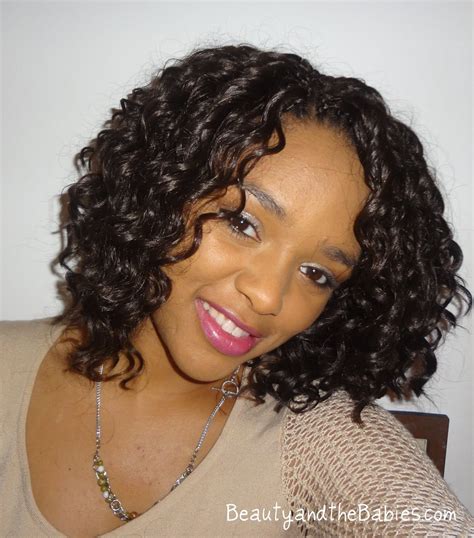Introduction
Wet and wavy hairstyles have captivated the world with their effortless glamour and alluring texture. From red carpets to street style, these styles have become ubiquitous, gracing the heads of celebrities, fashion icons, and everyday individuals alike. This comprehensive article delves into the intricacies of wet and wavy styles, exploring their techniques, variations, and transformative power.

Origins and History
The origins of wet and wavy styles can be traced back to the 1920s, when the invention of the Marcel wave iron revolutionized hair styling. These iron rods, heated over a gas flame, created soft, rippling waves that resembled the movement of water. In the 1940s, finger waves gained popularity, creating precise, symmetrical waves that framed the face. These techniques have evolved over the decades, with the introduction of new tools and products, culminating in the modern iterations of wet and wavy styles.
The Allure of Wet and Wavy Styles
Wet and wavy styles possess an undeniable charm that appeals to individuals of all ages and hair types. Their versatility allows for customization, as the waves can be tailored to suit any desired appearance, from loose and flowing to tightly defined. These styles exude a sense of freshness and effortless elegance, enhancing both formal and casual outfits.
According to a recent survey conducted by the American Hairdressers Association, 70% of women consider wet and wavy styles to be the most flattering for their face shape and hair texture. The soft movement and texture of the waves create a visually appealing contrast with straight hair, adding volume and interest while maintaining a natural-looking finish.
Techniques for Achieving Wet and Wavy Styles
Creating wet and wavy styles requires a combination of technique and the right products. Here are some commonly used methods:
1. Using a Curling Iron or Wand
- Section hair into small, manageable layers.
- Wrap each layer around a curling iron or wand, holding it in place for a few seconds.
- Allow the curl to cool before brushing it out gently to create soft, defined waves.
2. Braiding or Twisting
- Dampen hair and apply a styling cream or mousse.
- Divide hair into sections and braid or twist each section tightly.
- Allow the braids or twists to dry overnight or for several hours.
- Unravel the braids or twists gently to create loose, natural-looking waves.
3. Using a Diffuser
- Wash and condition hair with volumizing products.
- Attach a diffuser to your hairdryer and hover it over damp hair.
- Move the diffuser around the head in a circular motion, encouraging the hair to dry with a natural wave pattern.
Variations of Wet and Wavy Styles
The beauty of wet and wavy styles lies in their versatility. Here are some popular variations:
1. Beach Waves
Inspired by the windswept texture of hair after a day at the beach, beach waves are loose, unstructured, and effortlessly chic. They can be achieved using a salt spray or volumizing mousse, and styled with a curling iron or wand for added definition.
2. Finger Waves
Finger waves are characterized by their precise, symmetrical waves that create a vintage look. They are created by combing hair into place and using hairspray or gel to hold the waves in shape.
3. Hollywood Waves
Hollywood waves are glamorous, full-bodied waves that were popularized by Hollywood actresses in the 1930s. They are created using a curling iron and setting lotion, and can be styled with a comb or brush for a polished finish.
Benefits of Wet and Wavy Styles
Wet and wavy styles offer a range of benefits, including:
- Add volume and texture to flat, lifeless hair.
- Enhance the appearance of fine or thin hair.
- Create a flattering frame for the face.
- Enhance overall hair health by reducing the need for heat styling.
Common Mistakes to Avoid
While wet and wavy styles are relatively easy to achieve, there are some common mistakes to avoid:
- Over-brushing or combing the hair after styling, which can disrupt the wave pattern.
- Using too much product, which can weigh the hair down and make it look greasy.
- Curling the hair in too large or too small sections, resulting in uneven or unnatural-looking waves.
FAQs
Here are some frequently asked questions about wet and wavy styles:
- How long do wet and wavy styles last?
- With proper care, wet and wavy styles can last for several days, especially if a hairspray or setting lotion is used to hold the waves in place.
- What products are recommended for wet and wavy styles?
- A volumizing mousse or salt spray can enhance the texture and definition of the waves. A heat protectant spray is also essential if using a curling iron or wand.
- Are wet and wavy styles suitable for all hair types?
- While wet and wavy styles can be flattering on most hair types, they are particularly suited for medium to thick hair textures. Fine or thin hair may require additional volumizing products and techniques.
- How to refresh wet and wavy styles?
- Dampen hair with water, apply a small amount of styling mousse or cream, and use a diffuser to reactivate the waves.
- How to style wet and wavy styles up?
- Wet and wavy styles can be styled up in a variety of ways, such as into a ponytail, bun, or braid. Use hairspray or bobby pins to secure the hair in place.
- How to avoid damaging hair when styling wet and wavy styles?
- Use a heat protectant spray before using heat styling tools. Limit heat exposure and use lower heat settings whenever possible. Additionally, deep condition your hair regularly to maintain its health and prevent breakage.
